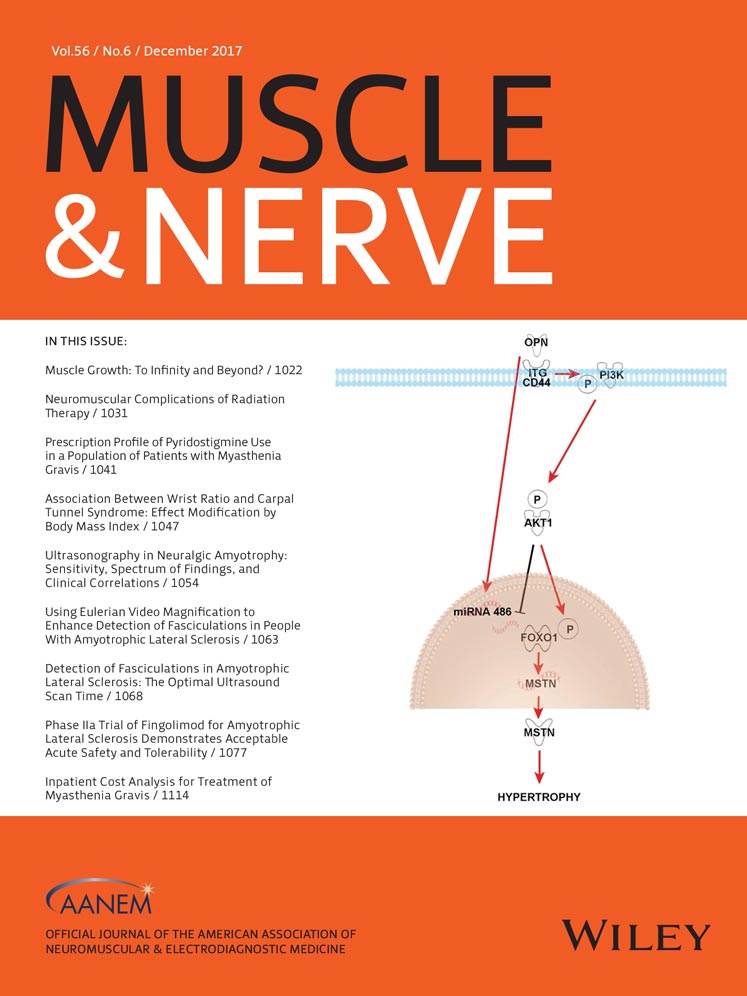Inpatient cost analysis for treatment of myasthenia gravis
Funding: J. M. Pines is funded by Adeptus Health Inc., the National Institutes of Health, and the Robert Wood Johnson Foundation; H. J. Kaminski is funded by a National Institutes of Health Grant, the Myasthenia Gravis Foundation of Illinois, and Neumann Professorship.
Conflicts of Interest: All authors report no conflicts of interest. J. M. Pines is a paid advisor and conducts research with Abbott Point-of-Care. He is an advisor to Janssen pharmaceuticals, Boeringer-Ingleheim, and Bristol-Myers Squibb. H. J. Kaminski serves on the editorial board of Experimental Neurology. He is coeditor of Neuromuscular Disorders in Clinical Practice and Myasthenia Gravis and Related Disorders. He serves on data and safety monitoring committees for Novartis and NeuroNext with monetary compensation. He provides consulting services for Alnylam, UCB, RA Pharmaceuticals, Momenta Therapeutics and has patent US 8,961,981 issued.
ABSTRACT
Introduction
We explore trends in U.S. inpatient costs of care over a 10-year period.
Methods
We compare myasthenia gravis (MG) with multiple sclerosis (MS) and overall U.S. hospital admissions using the Agency for Healthcare Research and Quality Nationwide Inpatient Sample database for 2003–2013.
Results
Total costs of MG inpatient care rose 13-fold from 2003 to 2013. This was accounted for by a greater than sixfold increase in discharges and a greater than twofold increase in cost per discharge. The < 17 and >85 years age groups experienced the greatest increases in discharges. Medicare and Medicaid use increased. Regional variations in cost were apparent. There were greater rises in the Midwestern and Southern United States, which is dissimilar to MS and all hospital admissions.
Discussion
There was a dramatic and disproportionate rise in the number of MG discharges, most likely because of changes in practice patterns. Muscle Nerve 56: 1114–1118, 2017




